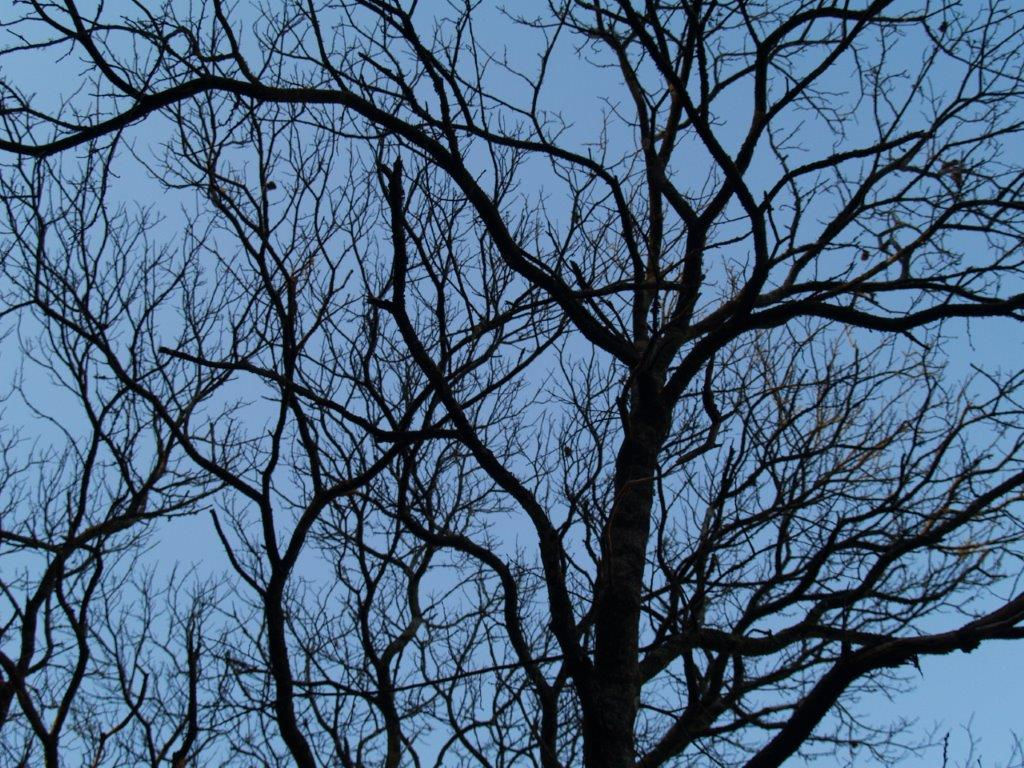
HISTORY
We have been caretakers of 'Growlers Creek Grove' for the last 20 years and despite extensive plantings and improvements, have never forgotten what drew us so strongly to this patch of steep dirt ….. the magnificent stand of 140 year old chestnut trees that overlook the Wandiligong Valley. Over a period of 15 years we gathered or stumbled on snippets of evidence that led us to the answers to two questions that we thought were lost in time.....who planted these trees & when.

Aerial photograph - Growlers Creek Grove outlined
While we seemed to be getting nowhere in our attempt to date the trees we continued looking after them, mulching leaf litter and husks and removing dead branches and suckers from their canopies. This lead to our next piece of the puzzle….we photographed and studied the growth rings on a long dead branch taken off one of the trees. The growth rings were scaled and aligned with Bright rainfall records in an attempt to determine the year that the branch started growing. This gave a clear result; the year 1894! The dead branch was pruned from the central trunk about 4 meters off the ground suggesting a planting date of circa 1874.
But another question still remained unanswered….who planted the trees?

Charles Williams, grandaughters, Alison (aged 3) and Louise (aged 5) and dog Sootie in the orchard next to the 'chestnut paddock' - 1956

A section of the stand of old trees
140 year old chestnut trees
Our interest in the history of the trees was sparked by an aerial photograph of Wandiligong that we believe was taken in the early 1920’s. The stand of nine trees are clearly visible in this photo, obviously already well established. We examined buildings and landmarks in the photo and delved into the history of Wandiligong (formerly Growlers Creek) in an attempt to date it. However, studying the fuzzy outline of tree canopies in a 90 year old aerial photograph led only to the rather vague conclusion.... that the trees were very old!

Growth rings on branch, marked in years. Only the first 75 years were used to date the tree, the last 20 years show the branch slowly dying.
Charles Williams
A title search revealed that our property was first privately owned in 1945, prior to this it was crown land. The first 'official' owner was Charles Williams. Charles was born in 1878, he married Edith in 1912 and moved into a house that was built by the Tobias family on Williams Road abutting what is now Growlers Creek Grove. Charles took unofficial possession of the land in Williams Road for farming, a common practice in Wandiligong between the wars. At this time we think he planted a stand of the newly available hybrid chestnut trees and an apple orchard on the flat between Williams Road and the track to our property, fittingly now named Tobias Track. We have been in contact with his descendants, his grand-daughter Alison and son in-law Lewis. They have fond memories of Wandiligong, the vegetable patch, fruit and apple orchard and of course the majestic chestnut trees. Alison recalls enjoying roasted chestnuts cooked on an open fire by her grand-father Charles as a treat before bed.
When Charles Williams planted the chestnut trees on the lower portion of our grove in around 1912, the original stand of nine trees up on the hill were already old, but planted by who?
Someone who obviously new that chestnut trees thrive on a steep elevated site. A person content to plant and tend to trees on land they didn't own. Someone with a sense of culture and community attaching to chestnuts; who intended to be around to harvest their first crop after caring for them for the best part of a decade.
We believe that an Italian immigrant planted the trees.
Antonio Masciorini
Antonio Masciorini came to Australia in 1859 from the Ticino, an Italian Region in Switzerland and travelled to NE Victoria at the height of the gold rush. In 1867 he purchased Mantons Drapery Store on the corner of Williams and Morses Creek Road in Growlers Creek. Antonio lived at these premises for approximately 14 years, less than 500 metres from the chestnut trees planted at the top of the grove.
The Ticino region is renowned for its castagneti (chestnut woods) that have been cultivated for thousands of years. Here, in the far North of Italy, chestnuts grow on Crown land, on steep slopes with cold winters, warm summers, well-drained soil and plenty of rain. Foraging for chestnuts in these woods is a family and cultural tradition.
A young Italian immigrant would naturally harbour a great desire to recreate some of the culture and tradition that framed their childhood memories in the Ticino in Northern Italy, in their new home at Growlers Creek (Wandiligong), Australia.

Antonio Masciorini
